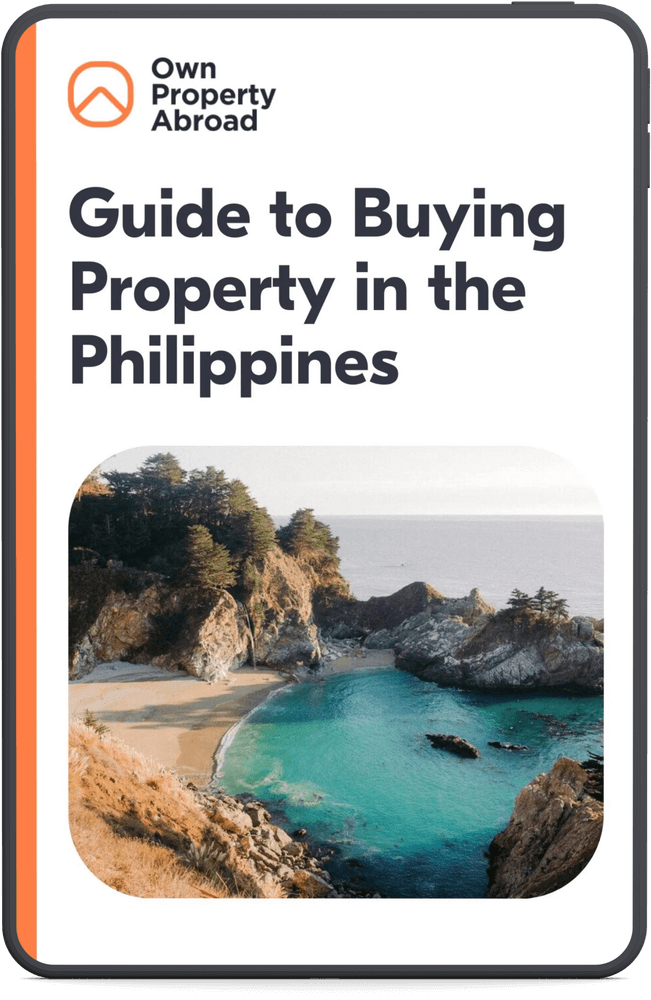Real estate financing options in the Philippines
Several options for financing real estate in the Philippines are available, catering to Filipinos and foreign nationals. These financing options assist investors in managing their finances and facilitate the progress of real estate projects. Below are some ways to finance real estate in the Philippines.
Spot cash payment
A spot cash payment is a payment made immediately upon delivery of a product or service. When it comes to financing real estate in the Philippines, this means that the buyer pays the full amount for the property upfront. In the Philippines, making a spot cash payment for properties often qualifies the buyer for discounts, which typically range from 5% to 10%, depending on the terms set by the developer or seller. However, this real estate financing option is not advisable when better financial leverage options (such as low-interest real estate loans) are available.
Bank financing
Bank financing is the most common type of loan for financing real estate in the Philippines. In this arrangement, banks lend you money to purchase properties, and you agree to pay interest and repay the borrowed amount. Bank home loans can reach up to 80% or more of the property’s appraised value, depending on the bank’s loan terms and conditions. Financing real estate in the Philippines through bank loans offers advantages such as fixed repayment schedules, typically lasting three to ten years, the possibility to negotiate a repayment holiday, and interest rates that can be fixed, making repayments predictable.
Pag-IBIG Fund
Pag-IBIG Fund is a government institution that provides financial assistance to Filipino workers for savings and financing real estate in the Philippines. To qualify for a Pag-IBIG Housing Loan, you must be a Filipino citizen (or a foreigner married to a Filipino), an active member with at least 24 months of savings, not more than 65 years old at the time of application, have the legal capacity to acquire real property, and have no previous foreclosures or cancellations on a Pag-IBIG loan.
The interest rates of the Pag-IBIG Housing Loan remain at their lowest levels, making it an ideal option for financing real estate in the Philippines. The loan is designed to help borrowers secure a home at the most affordable terms. Additionally, Pag-IBIG Housing Loans are covered by Mortgage Redemption Insurance (MRI) or Sales Redemption Insurance (SRI), as well as Fire and Allied Perils Insurance (FAPI), ensuring complete protection for the real estate loan.
In-House Financing
In-house financing in the Philippines is when a company, typically a property developer, offers a loan to consumers so that they can purchase properties. This type of real estate financing allows buyers to pay for their property without relying on third-party lenders such as banks. It offers a convenient option for financing real estate in the Philippines since it has a more straightforward approval process and faster real estate loan processing than the other options.
One of the advantages of in-house financing in the Philippines is that it requires fewer requirements, making the approval process faster than other options for financing real estate in the Philippines. However, it’s important to note that in-house financing interest rates are generally higher than those banks offer. If you want to move into your home immediately, many developers will allow you to do so once your in-house financing is approved, unlike the lengthy process of bank or Pag-IBIG loans. Additionally, in-house financing is the best option to avoid dealing with private lenders in the Philippines. It offers a more direct transaction with the property developer, making in-house financing a more streamlined option for financing real estate in the Philippines.
Deferred cash payment
Deferred cash payment means that the total price of a real estate property will be divided equally over a specified period, such as three years. Phrases like “No down payment required; No interest” typically indicate the use of this payment method in financing real estate in the Philippines. The advantages of deferred cash payment include no interest rates, no down payment, no need to worry about long-term payments, shorter processing periods for real estate documents, and potential discounts from some developers. However, the downside is that the monthly payments tend to be larger since the terms are shorter.
Valuable insights and practical advice, distilled from years of expertise and real-world experience.


Frequently Asked Questions (FAQs)
How much do I need to invest in real estate in the Philippines?
The amount you need to invest in real estate in the Philippines varies depending on location, property type, and developer but can start from as low as ₱ 500,000 ($8,745) for low-cost housing to millions of pesos for prime properties in major cities like Manila or Cebu.
How can I buy real estate in the Philippines with no money?
You can buy real estate in the Philippines without money by exploring zero down payment offers, rent-to-own schemes, Pag-IBIG or bank financing, or partnering with investors to fund the purchase.
How much income do I need to buy a house in the Philippines?
To buy a house in the Philippines, you generally need a monthly income of at least ₱ 30,000 ($525) to ₱ 50,000 ($875), depending on the property price and the financing terms you choose.
How can I qualify for a Pag-IBIG housing loan?
To qualify for a Pag-IBIG housing loan, you must be a Filipino citizen (or a foreigner married to a Filipino), an active member with at least 24 months of savings, not more than 65 years old at the time of application, have the legal capacity to acquire real property, and have no previous foreclosures or cancellations on a Pag-IBIG loan.
What is the best bank for home loans in the Philippines?
The best bank for home loans in the Philippines depends on individual preferences, but some of the top banks include BPI, BDO, Metrobank, and UnionBank, offering competitive rates and flexible terms.
What is the best housing loan in the Philippines?
The best housing loan in the Philippines depends on individual needs, but Pag-IBIG Housing Loan is often considered one of the best due to its low interest rates, flexible payment terms, and accessibility for Filipino citizens.




